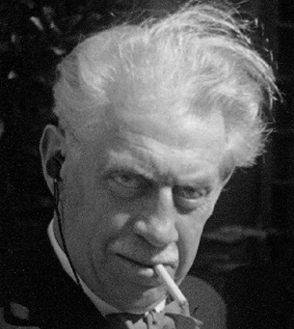- FR
S’inscrire
- Acheter
- Vendre
- Plus
- Galerie
- Commerce d'art
- Maison d'Édition
- Kornfeld aujourd’hui
- L'histoire de la Maison
- Informations

His trip to the Orient in 1911 with the architect and artist Charles-Edouard Jeanneret (1887-1965, later Le Corbusier), which took them via Prague, Vienna, Budapest, Bucharest, the Balkans to Constantinople and the Holy Mount Athos and finally to Athens, was significant for art history. From 1914, he worked for the art dealership F. A. C. Prestel in Frankfurt am Main, where he was responsible for the print catalogues. While cataloguing the Goldschmidt auctions in 1917, he met and came to appreciate his future business partner Richard G. Gutekunst (1870-1961).
The two decided to found a company together and to relocate their art dealing activities to Switzerland and, due to Klipstein's connections to the federal capital, to Bern. In 1919, the company ‘Gutekunst und Klipstein’ was entered in the commercial register in Bern. The first premises were opened at Hotelgasse 8 near the Zeitglockenturm in Bern in 1920. The company limited itself to trading and organising exhibitions. Gutekunst retired from business life in 1928 and left the company to his partner Klipstein. At the beginning of the 1930s, the company moved into new, larger premises at Amthausgasse 16, premises that facilitated the resumption of auction activities in 1934. During the Second World War, the company moved to smaller premises at Thunstrasse 7 in 1940 due to falling sales, and the auctions and exhibitions were held in the Berner Schulwarte. In 1944, the opportunity arose to relocate the company to the beautiful ‘Villa Villette’ at Laupenstrasse 49, the private home of Klipstein's wife Frieda's family. Two large rooms on the ground floor were combined to create an in-house ‘auction room’.
In addition to trading, Klipstein had always been academically active, for example he compiled a catalogue raisonné of Käthe Kollwitz' graphic works for the years 1890 to 1912. As the brother of an artist, he was very interested in communicating “contemporary positions”. His contacts with Käthe Kollwitz and Ernst Ludwig Kirchner are worth mentioning. In consultation with Max Huggler and the artist, Klipstein exhibited Kirchner's prints in the rooms on Amthausgasse in 1932, while oil paintings, watercolours, sculptures and drawings were shown in the Berner Kunsthalle.
One spring morning in 1951, Klipstein collapsed at his desk in the middle of his work. He was taken to his flat on the first floor of the building and finally died on 4 April. After the initial confusion, long-time employee Frieda Schuh and the young Eberhard W. Kornfeld decided to continue the business together with his widow Frieda. ‘When August Klipstein opened one of his famous auctions, the private print collectors, museum people and art dealers from far and wide sat like a large family at the feet of a fatherly, revered and feared friend,’ wrote Georg Schmidt, then director of the Kunstmuseum Basel, in an obituary in 1951.